The ancient banyan tree stands on a high, sturdy mound, its wide canopy spreading to shade the ancient communal house. According to the elders, the banyan tree dates back to the construction of An Luy communal house (An Khe communal house) in the late 18th century.
The ancient banyan tree right behind An Khe communal house in the Tay Son Thuong Dao relic site was saved and is growing well. Photo: Ngoc Minh
For hundreds of years, the banyan tree has been associated with the construction and development of the ancient communal house and has become a familiar image in the hearts of the people as well as many generations of caretakers and protectors of the communal house.
Mr. Ngo Van Duong (born in 1963) said: Since childhood, he often followed his grandfather to the village temple to burn incense and saw the "old banyan tree" with a rough body that was larger than ten people could hug and hundreds of long roots sprouting from the trunk, branches hanging down like a long, strong beard.
Over the years, despite the many times it was hit by storms, strong that broke branches, severed tops, and termites that attacked and rotted the trunk, the branches and leaves were still lush and green, quietly following the changes of the times.
Previously, some people burned incense and secretly threw away the altars and statues of the God of Wealth and the God of the Land around the tree, affecting the landscape and environment of the relic site. "I and the elders in the ritual committee have reminded many times and cleaned up neatly and cleanly, but the situation of throwing away the altars and burning incense under the banyan tree still happens," Mr. Duong said indignantly.
The fire left two-thirds of the ancient banyan tree burned black. Photo: Ngoc Minh
On the evening of the 29th of the Lunar New Year of the Tiger - 2022, when every household and every person was busy cleaning their houses and preparing to welcome the New Year, a fierce fire suddenly broke out at the old banyan tree. People around the communal house called the authorities and the An Khe communal house's ritual committee.
Mr. Tran Quang Khanh - Deputy Head of the An Khe Communal House Ritual Committee - recall: Hearing the news that the banyan tree was on fire, he left his housework and immediately ran to the scene with other members to pull the water hose to put out the fire. Just a few minutes later, the An Khe Fire Fighting and Rescue Police Team mobilized 2 specialized vehicles and dozens of officers and soldiers to approach the scene to control the fire, preventing it from spreading and affecting the ancient communal house.
According to Mr. Khanh, after many years, the dry branches and leaves had formed a thick layer of humus, combined with the large amount of rotten wood in the banyan tree roots, so when it caught fire, it burned fiercely, creating smoldering charcoal underneath. Therefore, on the 4th day of Tet, the fire flared up again, and people had to ask the fire department to come and put it out.
"To prevent the fire from rekindling, we pulled pipes and pumped dozens of cubic meters of water into the tree roots to completely extinguish the fire," Mr. Khanh shared.
Affected by the fire, many banyan roots were rotten. Photo: Ngoc Minh
The fire left 2/3 of the tree burned black with smoke, the roots peeled off and withered, the old banyan tree fell into a state of exhaustion, each leaf withered and fell, the branches were tattered and bare. Worried that the "old banyan" would die, Mr. Duong dug up the soil to build a bank around the unburned part of the banyan tree to retain water and increase the tree's humidity and coolness.
During the hot season, he watered the tree twice a day. He not only watered the trunk, but also the small roots hanging down from the high branches that remained after the fire. He also spent money on root stimulants, fertilizers, and watered and supplemented the tree with nutrients to help it recover quickly. Nearly a year later, on the rough brown bark, new shoots sprouted, and the ancient banyan tree was revived.
"Seeing the tree grow, I am very happy. I continue to take care of it and clear the grass. Everything I do comes from the voluntary spirit and responsibility of a villager and continues the tradition of our ancestors taking good care of the village temple," Mr. Duong confided.
Mr. Tran Ngoc Hy - Head of the An Khe Communal House Ritual Committee planted a banyan tree in the banyan hole after the fire. Photo: Ngoc Minh
Under the majestic and shady banyan tree, Mr. Tran Ngoc Hy - Head of the An Khe Communal House Ritual Committee - said: Along with the attention of the local government, the members of the Communal House Ritual Committee all have a high sense of responsibility in taking care of and preserving the cultural and religious works and institutions at the relic site. Not only has he saved the ancient banyan tree, over the years, Mr. Duong has also taken care of the communal house incense and voluntarily planted many trees.
"We brought some flower pots and ornamental plants from our family to plant on the burnt banyan tree and display it to make the communal house space greener and more colorful. Under the dedicated care of Mr. Duong and the members, in just a few years, the banyan tree will grow strongly," Mr. Hy excitedly informed.
The ancient banyan tree continues to provide shade for the village communal house. Photo: Ngoc Minh
From afar, the tall banyan tree blends with the green of the trees, areca trees, and betel trellis, creating a solemn, quiet, and ancient space for the ancient communal house and relic site.
Source: https://baogialai.com.vn/ong-tu-cuu-song-cay-da-co-thu-o-an-khe-dinh-post330610.html


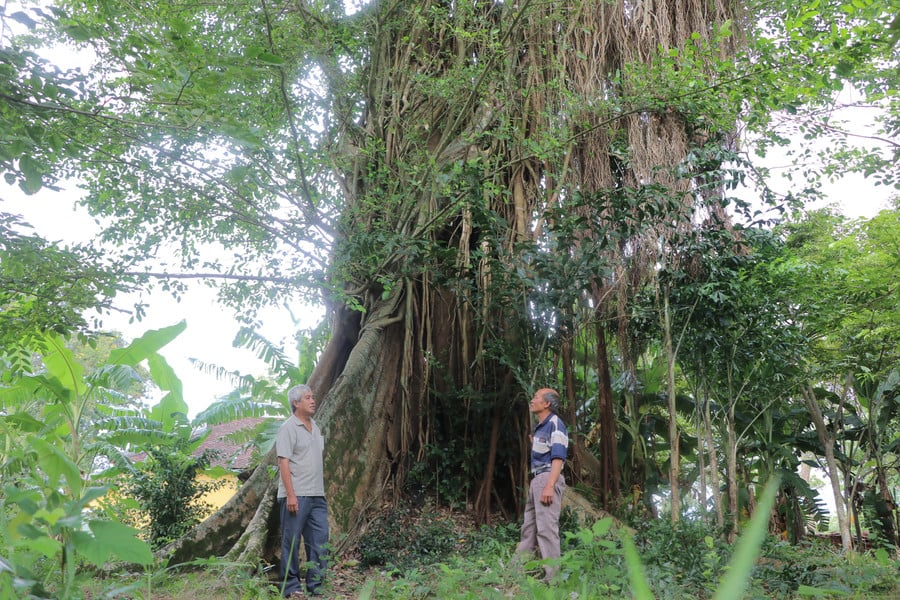
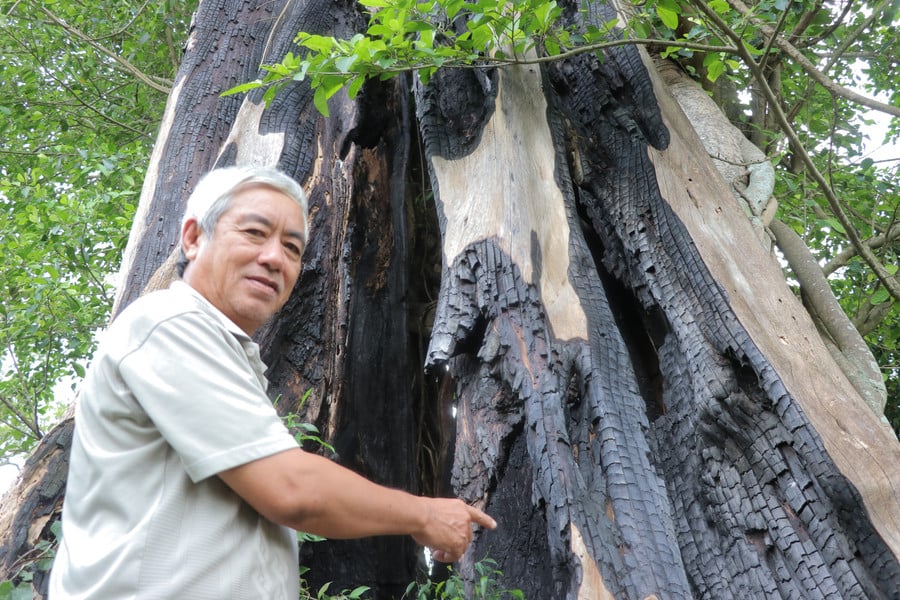
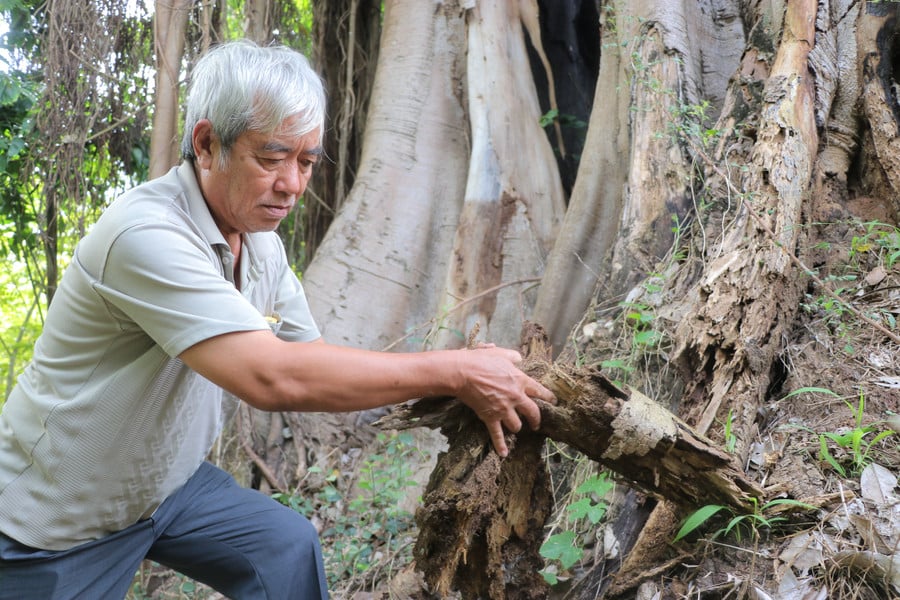
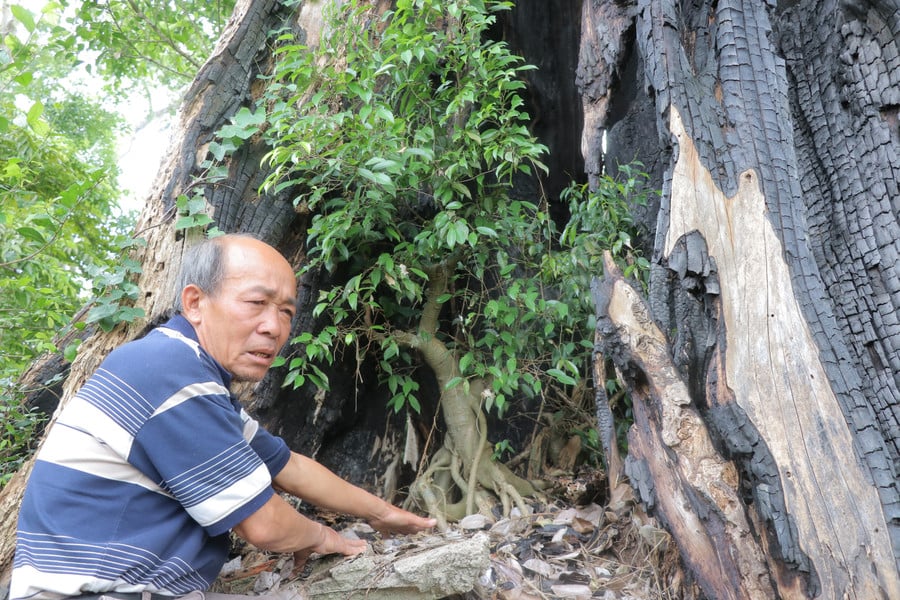
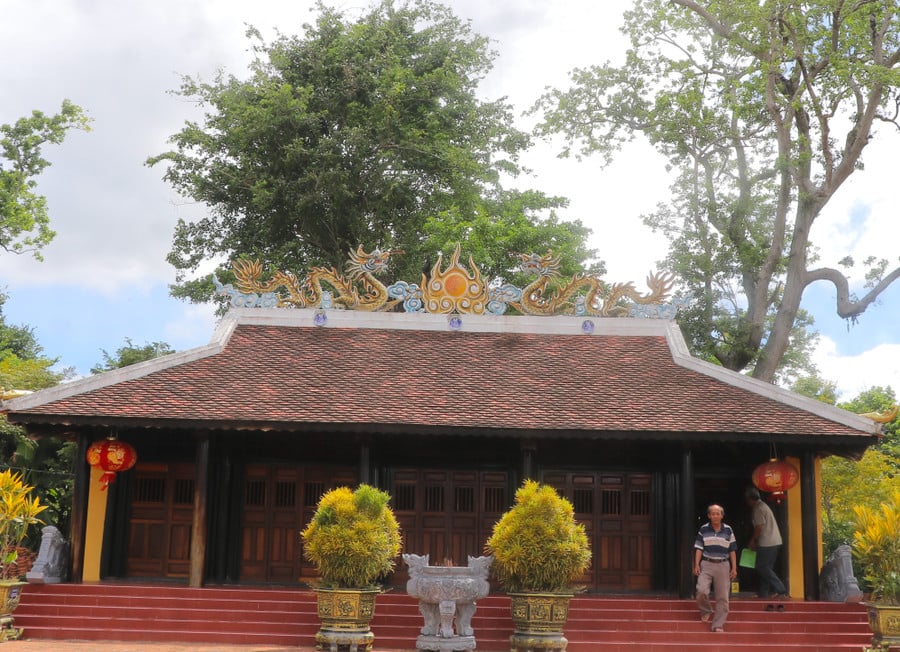

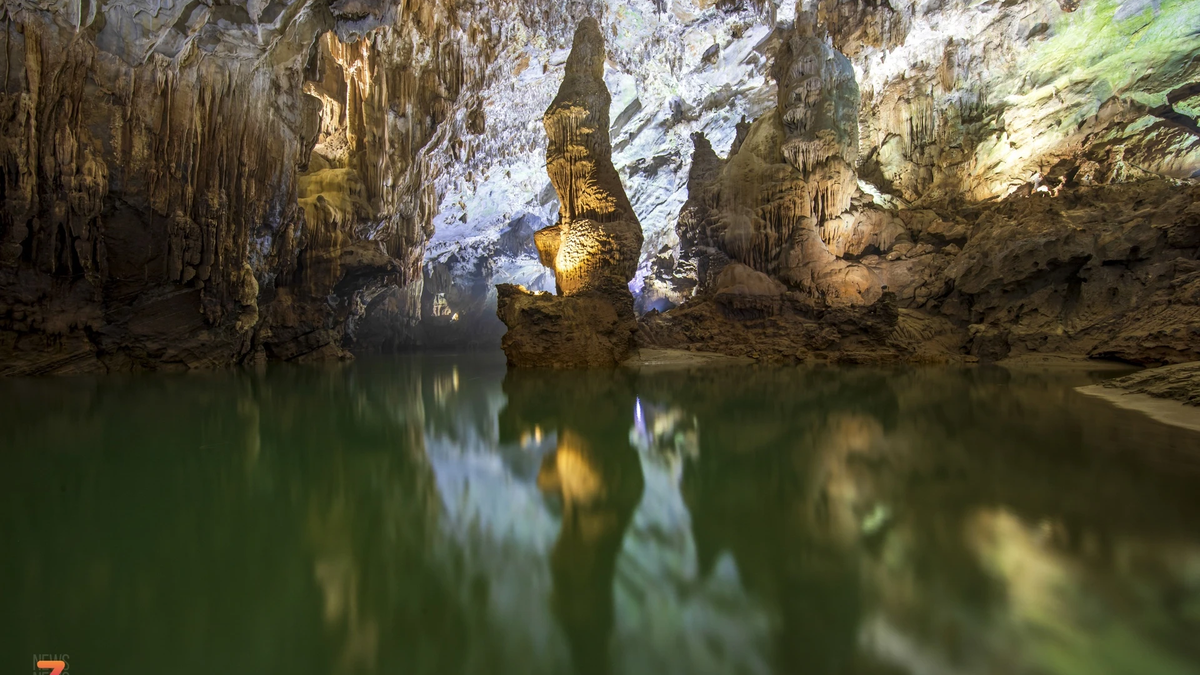




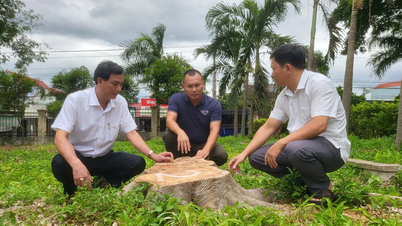

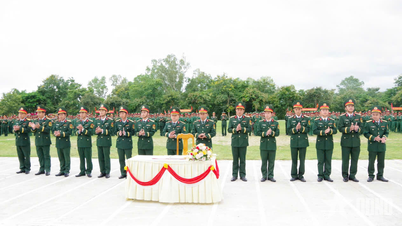



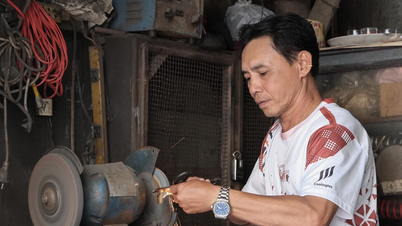

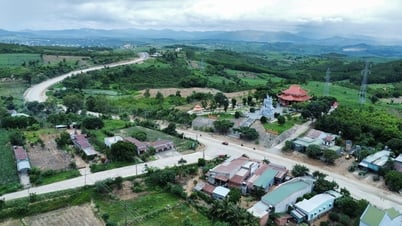

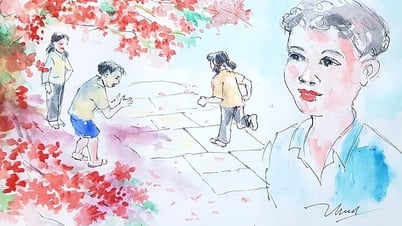





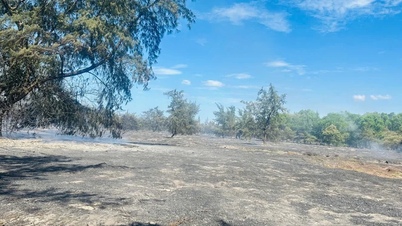

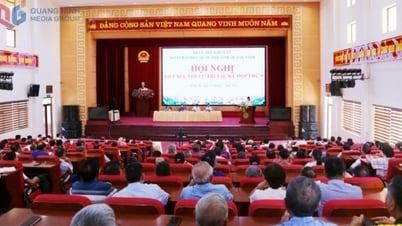






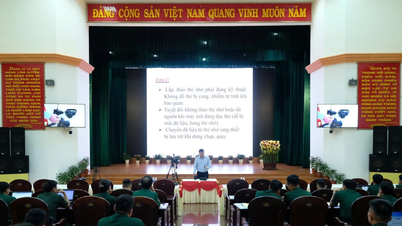

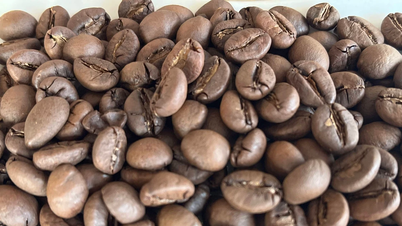


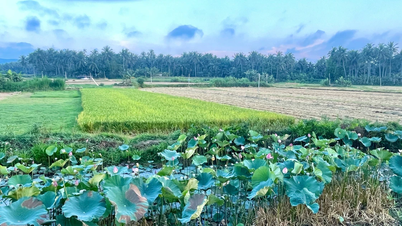


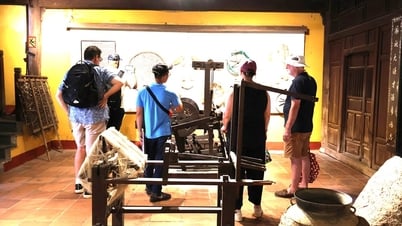

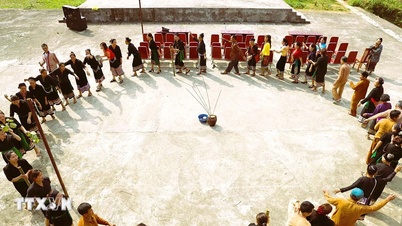
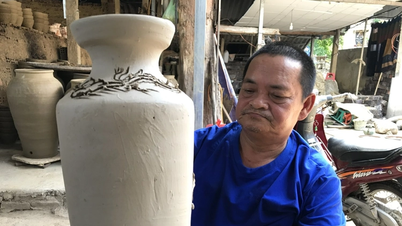

















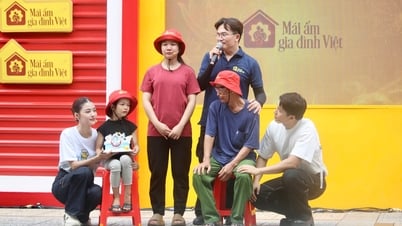























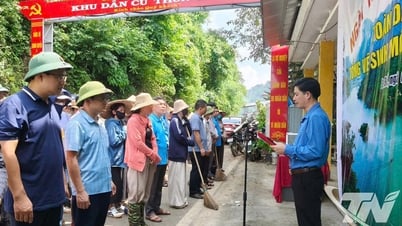

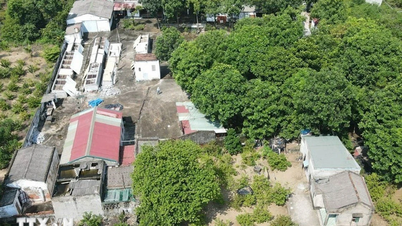













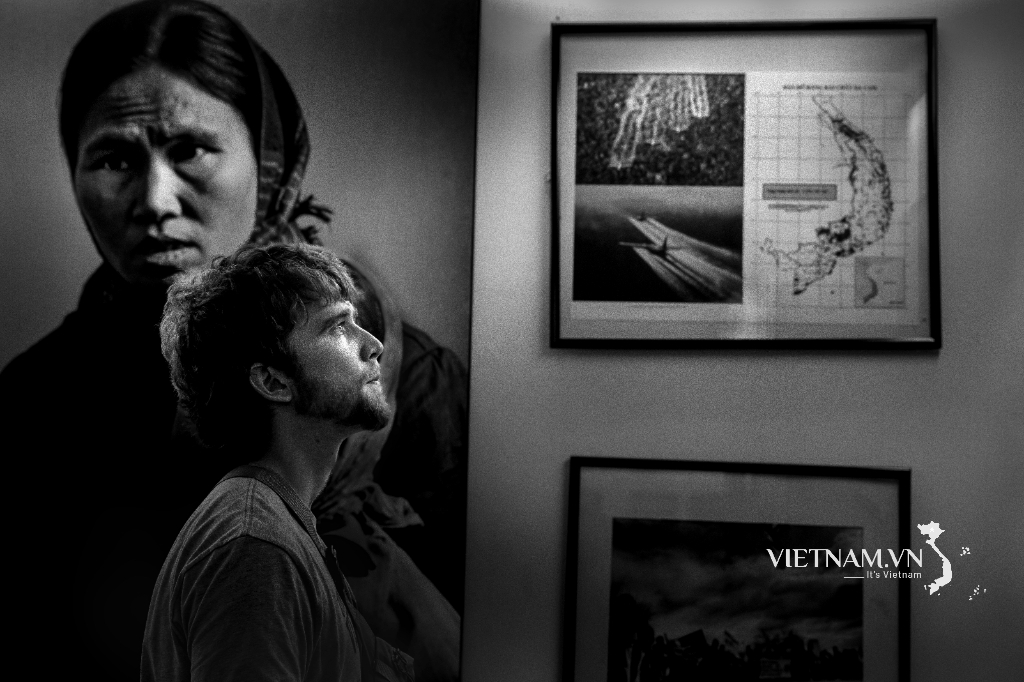

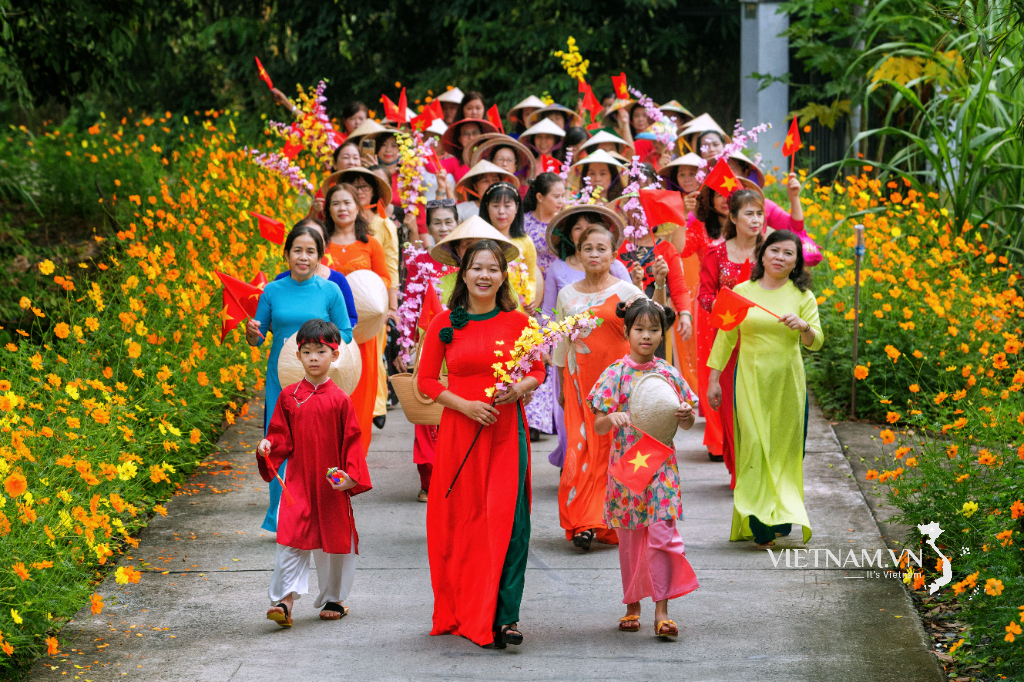

Comment (0)